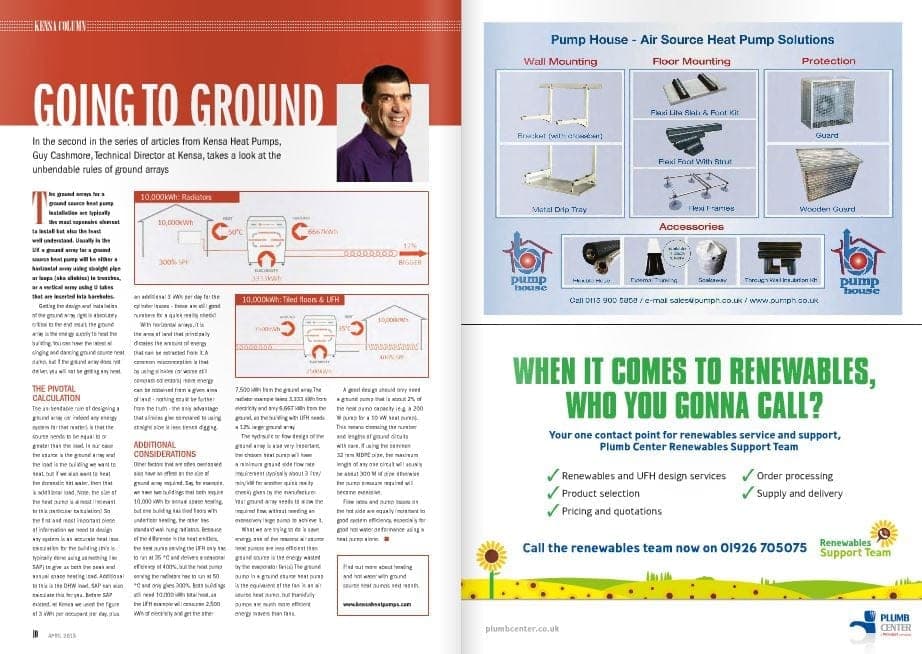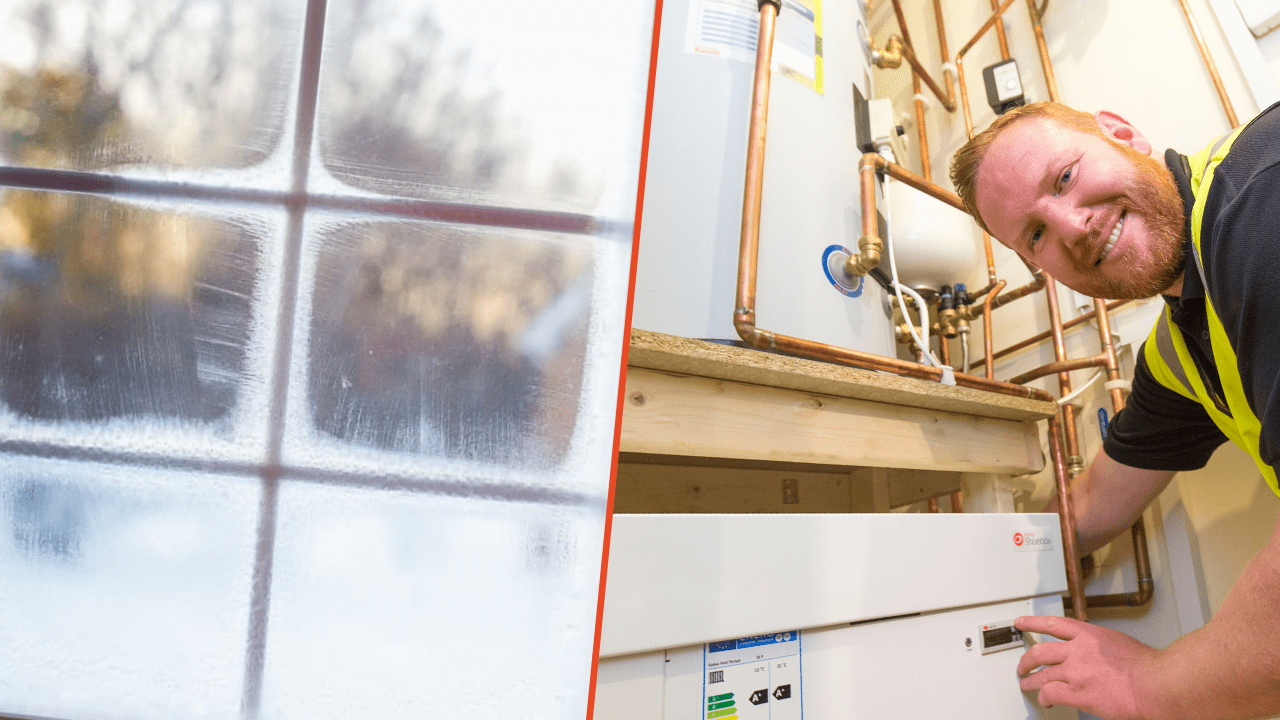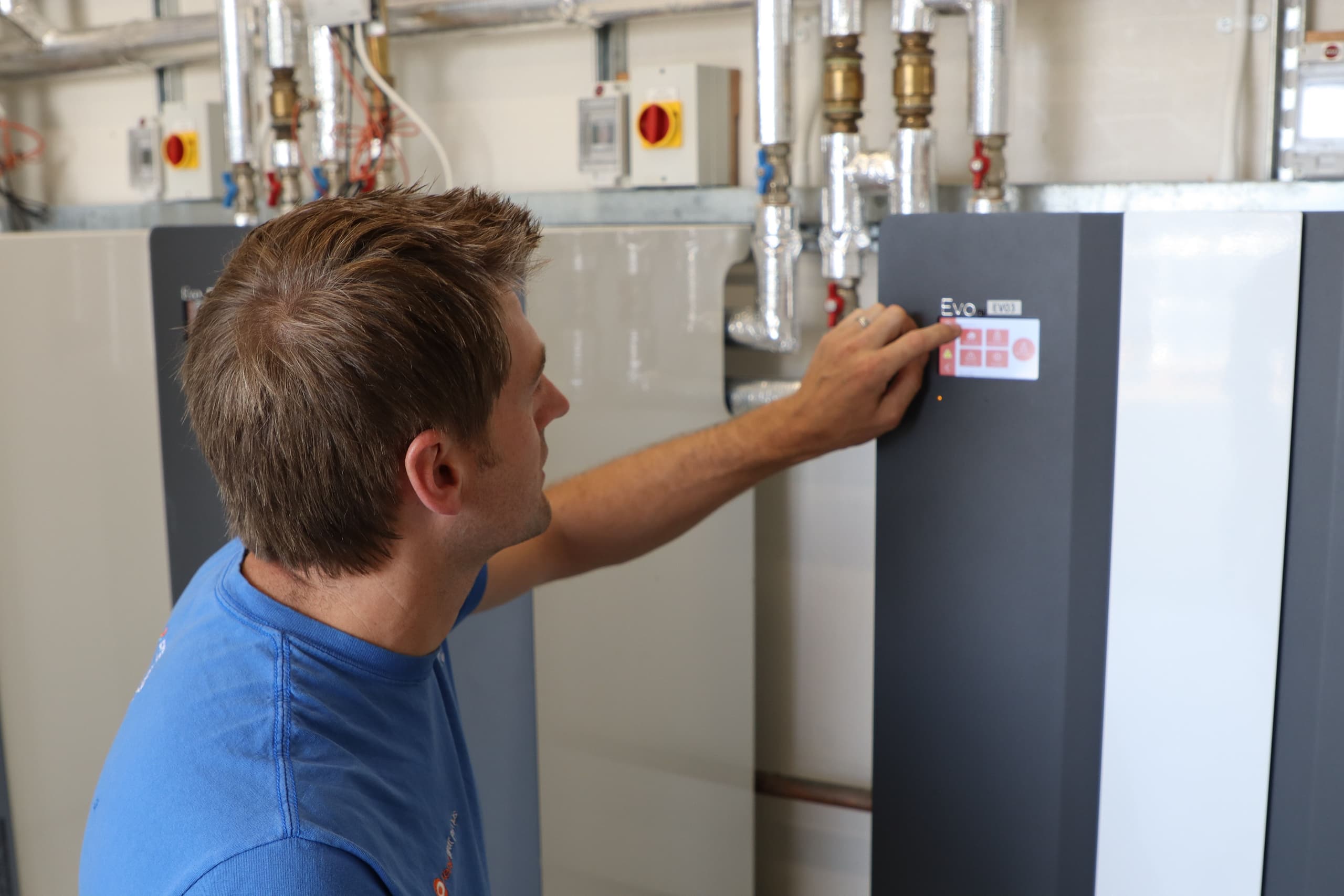ErP Support
- Installers
- 10 min read
What is ErP?
ErP stands for Energy-related products. These are any products that use energy to operate or have an impact on energy consumption.
ErP ratings are based on how energy efficient a product is. For example, if a ground source heat pump has an A++ ErP rating, it is considered highly efficient because the heat pump produces more energy than it consumes. Heat pumps must show their energy performance both as an individual product and as an overall heating system.
The two directives that make up ErP
- Energy labelling, which impacts both the manufacturer and installers of energy-related products.
- Ecodesign, which impacts the manufacturer.
What is the highest ErP rating possible?
As of the 26th September 2019, the energy classes for products and packages were updated to A+++ as the highest rating and G as the lowest.
The highest energy class reflected an industry-wide improvement in the efficiency of products. This was driven by the Ecodesign Directive, the framework that consistently aims to improve the environmental performance of products.
Why do ground source heat pumps have similar or lower ErP ratings than air source?
Testing conditions vary
The same energy efficiency scale is used for ground source, water source and air source, and at first glance, it could look as though there is a direct comparison of efficiency between them. However, it is important to remember that the actual tests carried out by the manufacturer to determine the seasonal space heating energy efficiency are at different conditions for different technologies.
It can be seen that the source temperatures used in the air source tests vary from –7 to 12°C (with the majority of the time greater than 0°C), whereas the ground and water source temperatures remain constant at 0°C throughout the year and in fact, in all climates.
Testing vs. true climate conditions
Within the UK, MCS standards also dictate that the ground array for a ground source heat pump must be designed for a minimum temperature of the thermal transfer fluid entering the heat pump of 0°C.
As efficiency can vary with inlet temperature, the test conditions for ground source are very stringent and not really representative of the ‘true’ UK climate and conditions. This leads to a lower seasonal space heating energy efficiency than would be recorded in actual installations.
Therefore, it is reasonable to assume that the performance of a ground source heat pump or water source will actually be higher than that reported on the seasonal heating energy efficiency figure and certainly higher than the air source figures.
Directive 1: Energy labelling
What is an ErP product label?
As a requirement under EU regulations, a product label shows the energy performance of a ground source heat pump on a scale of G to A+++. Many of us will be familiar with ErP product labels on fridges, cookers, televisions, etc.
The label is provided with the product by the manufacturer and is produced following product testing. As well as energy performance, it also shows other information such as noise and output over the three different climates within Europe.
Ground source heat pumps have ErP labels to show their energy performance both as an individual product and when part of an overall heating system.
An Introduction to ErP (Chapter 1)
This guide features:
- The ErP laws and what they mean for installers and manufacturers of ground source heat pump systems.
- ErP’s goals.
- ErP requirements: Introducing Ecodesign and Eco Labelling.
- Eco Labelling requirements on the installer for heating systems.
- Why ErP is being introduced: Benefits to customers and the climate.
How does the ErP product label affect heat pump installers?
It means that any new heat pump installed must have an energy label provided by the manufacturer. However, any product that is in the supply chain, for instance in a distributor’s warehouse, is exempt.
It is the installer’s responsibility to produce a second ‘package’ label and product fiche. This details the main components of the complete system and the effect that these have on the overall system efficiency.
What does ErP mean for end users?
It means they can easily see how efficient the system is compared to other manufacturers in a clear, familiar and understandable way. It will help them to make an informed judgement and select the best equipment to maximise the efficiency of their system.
Chapter 2: How to be ErP compliant
This guide covers how to be ErP compliant, including:
- What Kensa is doing to ensure its products are ErP compliant.
- Introducing the package label and the package fiche: What installers need to do.
- How installers can ensure marketing is ErP compliant.
What is a product fiche?
A product fiche is a document that supports the energy product label. It features the technical details of the system, the results of the required testing, and hence the energy rating of the equipment.
The product fiche will be available from the product’s manufacturer, which you can use to produce the ‘package label’ and a ‘package’ fiche. Remember, you must consider the product fiche as part of the whole installation for the package fiche. This will include all of the appliances used and their impact on the whole system’s efficiency.
For example, you can produce a technical information sheet that details the main components of the system and their associated effect on the overall efficiency.
What is an ErP package label?
The package label is required if the system includes a heater with temperature controls, solar or supplementary heating, or a combination of these.
It gives the client or installer a chance to select the most efficient products to incorporate into the system. The installer will take information from each of the product fiches supplied with the products, and combine these to provide a package fiche. This will detail the overall efficiency of the system.
The information from this package fiche can then be used to produce a package label.
Who is responsible for producing the ErP package label?
The installer is responsible for producing the package label by using the information detailed within each product fiche.
Although it seems onerous and complicated, in reality, all the data should be readily available and it is a matter of entering the data into a spreadsheet. Kensa can help installers complete this.
Chapter 3: producing a package fiche & label
Items covered in this guide include:
- The package fiche: The installer’s responsibility.
- Step-by-step guide to completing a package fiche.
- The package label: The installer’s responsibility.
- Step-by-step guide to completing the package label.
Do I need a package label if I am reusing existing controls?
If the controls or any part of the system is not new and does not have a product fiche or product label, then a package label is not required. A package label is only required if the whole system is being installed from new.
If I am using a hot water cylinder with a heat pump, do I need to produce a package label?
If the system is simply a hot water cylinder and heat pump, a package label does not need to be provided. However, building regulations do require a minimum heating control of a thermostat and on/off controller. If these items are new and also installed at the same time, a package label is required. If the controls are already existing or second hand, then you do not need a package label.
What ErP documents do I give to my client?
With regards to ErP, the client should be left with the following documents:
- Individual Product Labels (for all items that have been installed and require them).
- Individual Product Fiches (for all items that have been installed and require them).
- Package Label (where required).
- Package Fiche (where required).
Where do I put the product & package labels?
The actual product label only needs to be shown on the product where the product is physically on show. For example, within a show room or at an exhibition.
However, the product seasonal heating energy efficiency class, for example A+, should be referenced within advertisements, price lists and technical promotional material. The product fiche has to be provided and needs to be included in the product brochure or other literature provided with the product.
Essential ErP resources
Use our package fiche template
In order to produce your package label, you first need to produce a package fiche. To calculate the seasonal efficiency of the entire system put together, use the product fiche information from each appliances being used.
Create an ErP package label
In order to comply with the ErP Directive for ground source heat pumps, you must produce a package label for any heating system featuring a ground source heat pump and new controls (and supplementary boiler or solar thermal if used).
Watch chapter 4: System handover
This final installment in Kensa’s series of ErP guides outlines what an installer needs to provide to the customer during the system handover.
Items covered in this guide include:
- Handover documents.
- The Heat Emitter Guide (reference document) and System Seasonal Co-efficient of Performance (SSCOP).
*Please note the guide mentions the ErP and the Renewable Heat Incentive, the RHI funding stream has now ended.
Directive 2: Ecodesign
What is Ecodesign?
The EU Ecodesign Directive establishes a framework under which manufacturers of energy-using products are obliged to reduce the energy consumption and other negative environmental impacts occurring throughout the product life cycle.
This scheme is complemented by the Energy Labelling Directive. It sets performance criteria which manufacturers must meet in order to legally bring their product to the market
Any product that does not meet these requirements will not get a CE mark, which all products must possess in order to be sold in the EU.
Does the Ecodesign criteria change over time?
Performance criteria required by the Ecodesign Directive will gradually increase, thereby continually improving the energy efficiency of products.
For example, the minimum efficiency level of a low-temperature heat pump that could be sold within the EU from 26th September 2015 was 115%. From 26th September 2017, this increased to 125%. Therefore, Ecodesign continually drives product improvements.
How is this scheme monitored?
The National Measurement and Regulation Office (NMRO) is responsible for monitoring and surveillance in the UK. Compliance with the regulations is mandatory, so it is important that installers understand the responsibilities.
The NMRO will conduct market surveillance on the industry and will react to any anomalies that they find or have been reported to them. Every country within the EU will have a similar body to monitor the scheme, and they can investigate any EU manufacturer and share their results with other bodies within the EU.
Does the Ecodesign directive only affect heat pumps?
No, the Ecodesign directive covers all space heating and water heating devices such as oil boilers, gas boilers, and heat pumps up to 400kW – although product labels are not required on products over 70kW.


